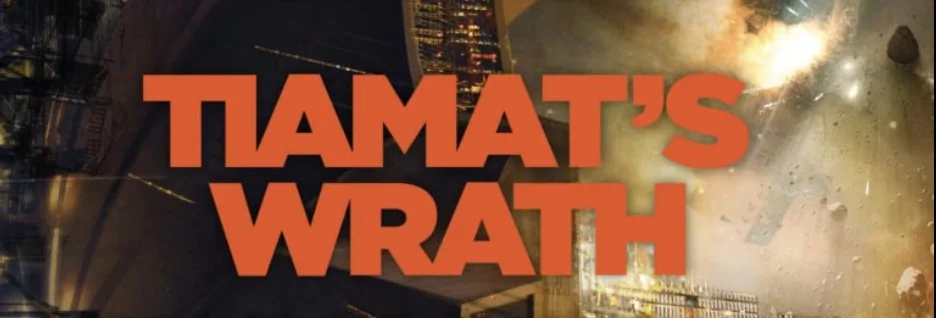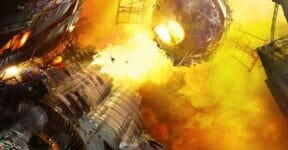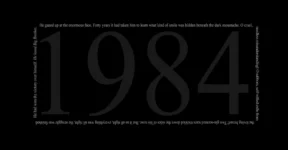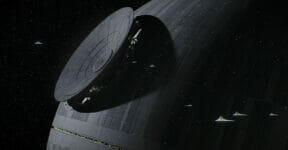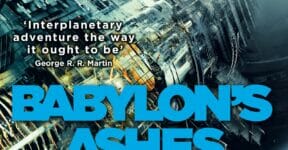The Expanse series reaches its 8th installment with Tiamat’s Wrath. Events in the novel take place about a year after the previous book, Persepolis Rising. The series has come to a point where nothing in the Consolidated Fleet of Earth, Mars, and the Asteroid Belt stands a chance against the might of the Laconian ship Heart of the Tempest – powered by alien technology. The Solar System has fallen under the authoritarian regime of the Laconia System, ruled by High Consul Winston Duarte.

Despite the odds, there are still patches of resistance throughout the galaxy. The empire promptly declared that all rebels were enemies of the state. Crew of the Rocinante are parts of the underground resistance; not only are they now wanted criminals but they also with no meaningful help except from the rebels themselves. Since an all-out attack on the Laconians is suicidal, the best thing Captain Holden and crew can do at least for now is to fight a guerilla war. As if things were not bad enough, they are now scattered in the aftermath of an insurrection on Media Station.
Persepolis Rising opens the story with the sad news of the death of Avasarala. The only person seemingly capable of preventing the Solar System civilization from endless political turmoil has gone. Laconians’ forces have no hesitation to show how they can deconstruct just about everything humanity has built so far. They are peerless and in total domination over the galaxy. During the funeral service, Holden notices some irregularities with Duarte’s physical features mostly because he became subjected to protomolecule tests by Dr. Paolo Cortázar.
Much like any other book in The Expanse series, Tiamat’s Wrath moves the plotline through individual characters’ perspectives, of which there are five:
- Teresa Duarte: daughter of Winston Duarte, the High Consul of the Laconian Empire. Under the guidance of the empire’s finest tutors – including the father himself – she will one day rule the Laconia System when the time comes. However, the journey to the throne might not be as easy as she has in mind. Political ploys and influences from outsiders may affect her judgment.
- Elvi Okoye: a researcher working on behalf of the Laconian Empire, she becomes tasked with unfolding the puzzling forces and technologies of unknown origins in various galaxies. During every mission, she is aboard the science ship Falcon. It doesn’t take long until she discovers menaces equipped with more than enough power to annihilate humanity. Okoye uses specially engineered catalysts to activate protomolecule artefacts in unexplored territories across the galaxy.
- Alex Kamal and Bobbie Draper: With the Rocinante safely hidden in the Freehold System and unable to fly anywhere undetected, Alex and Bobbie are aboard the stolen Laconian destroyer ship “Gathering Storm.” They are actively devising tactics to cripple the antimatter-powered Laconian defenses, or at least become a real annoyance to the imperial forces.
- Naomi Nagata: Unlike both Alex and Bobbie who want to finish the conflict as quickly as possible by taking down the Laconian Empire with firepower, Nagata is more inclined to end the war diplomatically.
Captain James Holden doesn’t have any dedicated chapter as a viewpoint character, but they use his perspective in the prologue, interlude, and epilogue.
During a scientific mission into the largely empty Tecoma System, the Falcon performs a weapon test by sending a bomb ship to a nearby wormhole. An intense gamma-ray burst happens immediately after the destruction of a neutron star, forcing the Falcon to escape into the Slow Zone. The gamma-ray unexpectedly continues to travel on a destructive path and eventually cripples Medina Station and destroys the Laconian battleship Eye of the Typhoon. Saba, the leader of the resistance, dies in the incident. Upon receiving news of Saba’s death, Naomi subsequently assumes leadership of the Underground.
Using viewpoint characters helps the plot-building a great deal with every slow reveal of each big secret to keep the tension high throughout the story. For example, no one knows if Amos is on a spy mission disguised as Timothy on Laconia and that Holden is playing the long game to topple Winston Duarte by exerting influence on the emperor’s daughter, Teresa. In fact, she has been communicating with Timothy all along without knowing his true identity.
Except for Alex and Bobbie, the rest of the crew are in separate places. Holden also remains a prisoner for much of the story. What the emperor doesn’t know is that Holden and Alex are working together to wage psychological war from within the empire. As the two of them carve out political manoeuvres to remove Winston Duarte from power, Naomi assumes leadership of the Underground movement and takes charge of the actual armed conflict in which the Gathering Storm – crewed by Alex and Bobbie – is targeting Laconian’s Magnetar-class Heart of the Tempest with an antimatter weapon.
The Science
Tiamat’s Wrath seems to be the point where The Expanse series moves from strictly “hard” into “soft” sci-fi territory by focusing more on the social sciences including history, psychology, and politics.
The introduction of the Ring Network, which is a series of wormholes that connect around 1300 worlds to each other, makes interstellar travel a real possibility. It might be technically workable in real life, but farfetched at least with the current technology. The idea of humanity’s troubles coping with the vastness of the universe remains a major topic here. When human civilization has ventured far away to distant planetary systems, the old-fashioned political struggles and armed conflicts never get left behind, as if they are inseparable ancient parts of humanity itself. The only way to bring humanity together is likely a massive threat of extinction from external alien entities.
We think Tiamat’s Wrath places heavy emphasis on the characters instead of the story. Such an approach makes the plotline feel slower than other books in the series and gives the impression that the novel only has a few major events to unfold. It works well in Tiamat’s Wrath because every battle, secret, loss, victory, and escape always packs a bigger punch when it comes. Each event becomes slowly constructed and carefully wrapped within context to deliver a satisfying reveal at the end.
Have you read Tiamat’s Wrath? Can you guess what the final and 9th book is like based on the story? We’d love to hear from you.
Other things you might want to know:
How many editions are available for Tiamat’s Wrath?
There are several including the Hardcover Edition released in 2019, a Limited Edition (published by Subterranean Press) in 2020, a Paperback Edition released in the United States, and the audiobook version.
What is Tiamat?
The title refers to a primordial goddess in ancient Babylonian mythology. It is said that she created the cosmos from chaos.
What is hard and soft sci-fi?
Soft sci-fi is more fantastical than its “hard” counterpart. The former deals with farfetched technologies, rich mythologies, detailed economic systems, and character studies. It typically explores political conflicts, philosophical problems, or authoritarian leadership. The solutions to those problems are most likely insurgence or military actions. The latter focuses on building a realistic scientific world with a detailed exposition of the technologies and the environment used in the story. In a true hard sci-fi novel, they usually root the problems in science and the solutions well.
Check out other articles by month:

